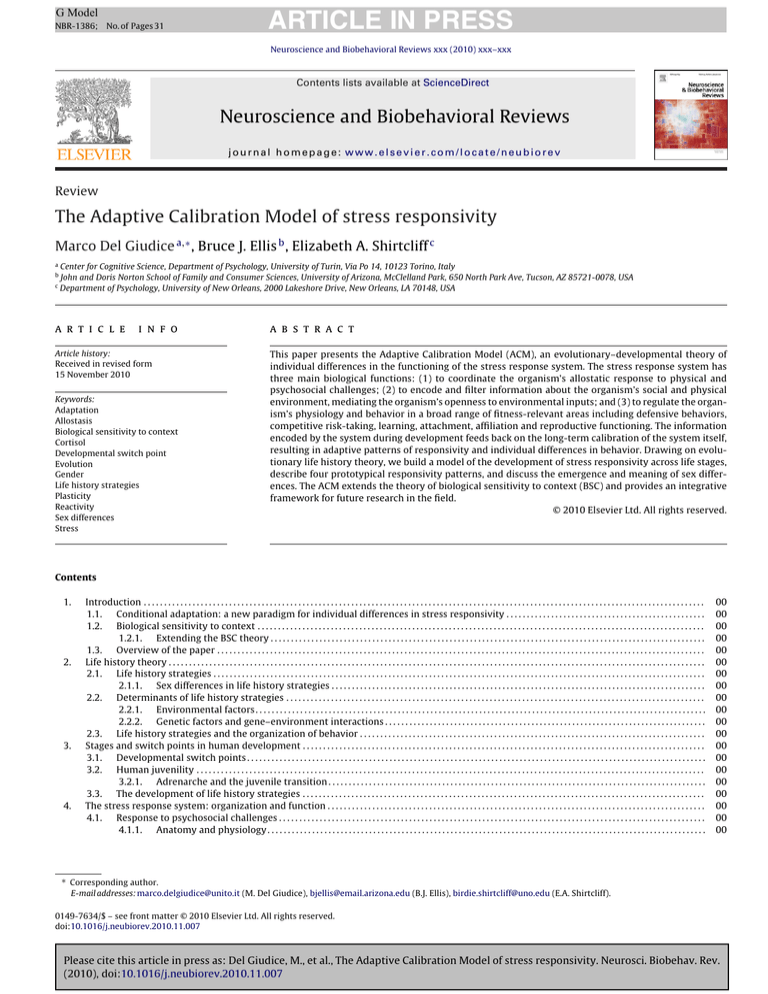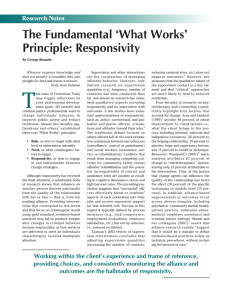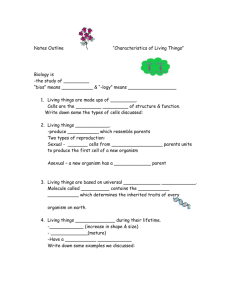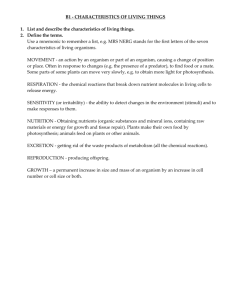
G Model
NBR-1386;
No. of Pages 31
ARTICLE IN PRESS
Neuroscience and Biobehavioral Reviews xxx (2010) xxx–xxx
Contents lists available at ScienceDirect
Neuroscience and Biobehavioral Reviews
journal homepage: www.elsevier.com/locate/neubiorev
Review
The Adaptive Calibration Model of stress responsivity
Marco Del Giudice a,∗ , Bruce J. Ellis b , Elizabeth A. Shirtcliff c
a
Center for Cognitive Science, Department of Psychology, University of Turin, Via Po 14, 10123 Torino, Italy
John and Doris Norton School of Family and Consumer Sciences, University of Arizona, McClelland Park, 650 North Park Ave, Tucson, AZ 85721-0078, USA
c
Department of Psychology, University of New Orleans, 2000 Lakeshore Drive, New Orleans, LA 70148, USA
b
a r t i c l e
i n f o
Article history:
Received in revised form
15 November 2010
Keywords:
Adaptation
Allostasis
Biological sensitivity to context
Cortisol
Developmental switch point
Evolution
Gender
Life history strategies
Plasticity
Reactivity
Sex differences
Stress
a b s t r a c t
This paper presents the Adaptive Calibration Model (ACM), an evolutionary–developmental theory of
individual differences in the functioning of the stress response system. The stress response system has
three main biological functions: (1) to coordinate the organism’s allostatic response to physical and
psychosocial challenges; (2) to encode and filter information about the organism’s social and physical
environment, mediating the organism’s openness to environmental inputs; and (3) to regulate the organism’s physiology and behavior in a broad range of fitness-relevant areas including defensive behaviors,
competitive risk-taking, learning, attachment, affiliation and reproductive functioning. The information
encoded by the system during development feeds back on the long-term calibration of the system itself,
resulting in adaptive patterns of responsivity and individual differences in behavior. Drawing on evolutionary life history theory, we build a model of the development of stress responsivity across life stages,
describe four prototypical responsivity patterns, and discuss the emergence and meaning of sex differences. The ACM extends the theory of biological sensitivity to context (BSC) and provides an integrative
framework for future research in the field.
© 2010 Elsevier Ltd. All rights reserved.
Contents
1.
2.
3.
4.
Introduction . . . . . . . . . . . . . . . . . . . . . . . . . . . . . . . . . . . . . . . . . . . . . . . . . . . . . . . . . . . . . . . . . . . . . . . . . . . . . . . . . . . . . . . . . . . . . . . . . . . . . . . . . . . . . . . . . . . . . . . . . . . . . . . . . . . . . . . . . .
1.1.
Conditional adaptation: a new paradigm for individual differences in stress responsivity . . . . . . . . . . . . . . . . . . . . . . . . . . . . . . . . . . . . . . . . . . . . . . . . .
1.2.
Biological sensitivity to context . . . . . . . . . . . . . . . . . . . . . . . . . . . . . . . . . . . . . . . . . . . . . . . . . . . . . . . . . . . . . . . . . . . . . . . . . . . . . . . . . . . . . . . . . . . . . . . . . . . . . . . . . . . . . .
1.2.1.
Extending the BSC theory . . . . . . . . . . . . . . . . . . . . . . . . . . . . . . . . . . . . . . . . . . . . . . . . . . . . . . . . . . . . . . . . . . . . . . . . . . . . . . . . . . . . . . . . . . . . . . . . . . . . . . . . . . .
1.3.
Overview of the paper . . . . . . . . . . . . . . . . . . . . . . . . . . . . . . . . . . . . . . . . . . . . . . . . . . . . . . . . . . . . . . . . . . . . . . . . . . . . . . . . . . . . . . . . . . . . . . . . . . . . . . . . . . . . . . . . . . . . . . . .
Life history theory . . . . . . . . . . . . . . . . . . . . . . . . . . . . . . . . . . . . . . . . . . . . . . . . . . . . . . . . . . . . . . . . . . . . . . . . . . . . . . . . . . . . . . . . . . . . . . . . . . . . . . . . . . . . . . . . . . . . . . . . . . . . . . . . . . . .
2.1.
Life history strategies . . . . . . . . . . . . . . . . . . . . . . . . . . . . . . . . . . . . . . . . . . . . . . . . . . . . . . . . . . . . . . . . . . . . . . . . . . . . . . . . . . . . . . . . . . . . . . . . . . . . . . . . . . . . . . . . . . . . . . . . .
2.1.1.
Sex differences in life history strategies . . . . . . . . . . . . . . . . . . . . . . . . . . . . . . . . . . . . . . . . . . . . . . . . . . . . . . . . . . . . . . . . . . . . . . . . . . . . . . . . . . . . . . . . . . . .
2.2.
Determinants of life history strategies . . . . . . . . . . . . . . . . . . . . . . . . . . . . . . . . . . . . . . . . . . . . . . . . . . . . . . . . . . . . . . . . . . . . . . . . . . . . . . . . . . . . . . . . . . . . . . . . . . . . . . .
2.2.1.
Environmental factors . . . . . . . . . . . . . . . . . . . . . . . . . . . . . . . . . . . . . . . . . . . . . . . . . . . . . . . . . . . . . . . . . . . . . . . . . . . . . . . . . . . . . . . . . . . . . . . . . . . . . . . . . . . . . . .
2.2.2.
Genetic factors and gene–environment interactions . . . . . . . . . . . . . . . . . . . . . . . . . . . . . . . . . . . . . . . . . . . . . . . . . . . . . . . . . . . . . . . . . . . . . . . . . . . . . . .
2.3.
Life history strategies and the organization of behavior . . . . . . . . . . . . . . . . . . . . . . . . . . . . . . . . . . . . . . . . . . . . . . . . . . . . . . . . . . . . . . . . . . . . . . . . . . . . . . . . . . . . .
Stages and switch points in human development . . . . . . . . . . . . . . . . . . . . . . . . . . . . . . . . . . . . . . . . . . . . . . . . . . . . . . . . . . . . . . . . . . . . . . . . . . . . . . . . . . . . . . . . . . . . . . . . . . .
3.1.
Developmental switch points . . . . . . . . . . . . . . . . . . . . . . . . . . . . . . . . . . . . . . . . . . . . . . . . . . . . . . . . . . . . . . . . . . . . . . . . . . . . . . . . . . . . . . . . . . . . . . . . . . . . . . . . . . . . . . . . .
3.2.
Human juvenility . . . . . . . . . . . . . . . . . . . . . . . . . . . . . . . . . . . . . . . . . . . . . . . . . . . . . . . . . . . . . . . . . . . . . . . . . . . . . . . . . . . . . . . . . . . . . . . . . . . . . . . . . . . . . . . . . . . . . . . . . . . . .
3.2.1.
Adrenarche and the juvenile transition . . . . . . . . . . . . . . . . . . . . . . . . . . . . . . . . . . . . . . . . . . . . . . . . . . . . . . . . . . . . . . . . . . . . . . . . . . . . . . . . . . . . . . . . . . . . .
3.3.
The development of life history strategies . . . . . . . . . . . . . . . . . . . . . . . . . . . . . . . . . . . . . . . . . . . . . . . . . . . . . . . . . . . . . . . . . . . . . . . . . . . . . . . . . . . . . . . . . . . . . . . . . . .
The stress response system: organization and function . . . . . . . . . . . . . . . . . . . . . . . . . . . . . . . . . . . . . . . . . . . . . . . . . . . . . . . . . . . . . . . . . . . . . . . . . . . . . . . . . . . . . . . . . . . . .
4.1.
Response to psychosocial challenges . . . . . . . . . . . . . . . . . . . . . . . . . . . . . . . . . . . . . . . . . . . . . . . . . . . . . . . . . . . . . . . . . . . . . . . . . . . . . . . . . . . . . . . . . . . . . . . . . . . . . . . . .
4.1.1.
Anatomy and physiology . . . . . . . . . . . . . . . . . . . . . . . . . . . . . . . . . . . . . . . . . . . . . . . . . . . . . . . . . . . . . . . . . . . . . . . . . . . . . . . . . . . . . . . . . . . . . . . . . . . . . . . . . . . .
00
00
00
00
00
00
00
00
00
00
00
00
00
00
00
00
00
00
00
00
∗ Corresponding author.
E-mail addresses: marco.delgiudice@unito.it (M. Del Giudice), bjellis@email.arizona.edu (B.J. Ellis), birdie.shirtcliff@uno.edu (E.A. Shirtcliff).
0149-7634/$ – see front matter © 2010 Elsevier Ltd. All rights reserved.
doi:10.1016/j.neubiorev.2010.11.007
Please cite this article in press as: Del Giudice, M., et al., The Adaptive Calibration Model of stress responsivity. Neurosci. Biobehav. Rev.
(2010), doi:10.1016/j.neubiorev.2010.11.007












